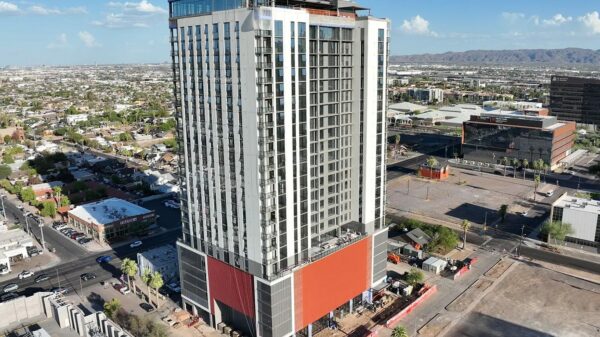The Monday Morning Quarterback
A quick analysis of important economic data released over the last week
By Elliot D. Pollack & Co. | Rose Law Group Reporter
The Federal Reserve is keeping a close watch on inflation and employment, with the goal of price stability and maximum employment. Their long-term inflation target is 2%, although they are willing to tolerate rates moderately above 2% for some time. Last month’s consumer price index brought this to the forefront with an increase of 5% from a year earlier. Fed officials believe the inflation rate reflects temporary factors that should fade later in the year. However, if inflation exceeds 2% for too long, businesses and consumers might anticipate more inflation in the future, which becomes self-fulfilling. If this occurs, the Fed will likely tighten their current policy sooner than planned, which is to hold their benchmark rate until the end of 2023.
One item that is showing signs of a price reduction is lumber, which peaked at more than $1,600 per thousand board-feet, up from an average of $400. As lumber mills have ramped up production, prices are expected to decline. Lumber prices on the futures market are down 45% from the peak but still above the long-term average price.
The 5.0% increase in the CPI is the largest since a 5.4% increase in August 2008. The index for used cars and trucks rose sharply in May by 7.3%, accounting for one-third of the seasonally adjusted increase in all items. In fact, the index for used vehicles is up 29.7% from May 2020.
The Fed’s June GDP forecast is for a 7.0% increase in 2021, followed by 3.3% in 2022. The unemployment rate is expected to reach 4.5% this year and 3.8% next year. Their inflation expectation is 3.4% in 2021, declining to 2.1% in 2022.
If all goes as forecasted, the pandemic should be well behind us. But the Fed warns that the path of the economy will rely on the course of the virus. They still cite risks and uncertainty to the economic outlook.
U.S. Snapshot:
- Leading indicators increased once again in May. The increase of 1.3% brings it above the previous expansion of January 2020. The index suggests strong economic growth in the near term.
- Retail sales declined in May from April’s record-breaking level. While the decline was only of 1.3%, retail sales are up 28.1% from a year ago. A pivot was observed in the data as consumers shifted from buying big-ticket items (autos, furniture, electronics) to services such as restaurants and bars. Supply chain disruptions and higher prices are crimping sales of long-lasting goods. We are finally seeing spending on things we didn’t spend on during the pandemic.
- Industrial production and capacity utilization both increased 0.8% from a month ago. For industrial, the gains in May represent growth in production in 7 out of the last 8 months. Capacity utilization came in at 75.2%, below the long-term average of 79.6%.
- The NAHB’s Housing Market Index fell to 81 in June. This was the lowest level since August of 2020. The increase in material and labor cost has pushed prices higher, making it harder for both potential buyers and builders to maintain affordability.
- Total housing starts (3.6%) and single-family starts (4.2%) were up for month of May, according to the latest numbers from the U.S. Census Bureau. The number of total permits, on the other hand, declined 3.0% and single-family permits declined 1.6%.
Arizona Snapshot:
- Employment gains across the state were low in May. Arizona gained 900 jobs, with 500 coming from Greater Phoenix and 1,200 in Greater Tucson (job losses in other parts of the state offset the gains of the major metros). The majority of the gains were in Leisure & Hospitality and Trade, Transportation, & Utilities.
- Year-to-date, Arizona employment is up 0.5%, while Greater Phoenix is up 20,800 jobs or 1.0%. Greater Tucson is down 0.6% losing 2,100 jobs.
- Permits in Greater Phoenix and Greater Tucson continue to outpace last year’s numbers, according to RL Brown’s latest data. Year-to-date, permits are up nearly 41% in metro Phoenix and 50% in metro Tucson. Resales and new-home sales remained at pace seen in 2021 despite the price increasing measured across both metros.
- · As an aside, the median sales price of existing homes ($380,000) surpassed the median price of new-home prices ($374,782) in Greater Phoenix. Although this continues to bear watching, the lack of resale inventory and builders increased the production of more affordable homes likely explains the current pricing situation.












